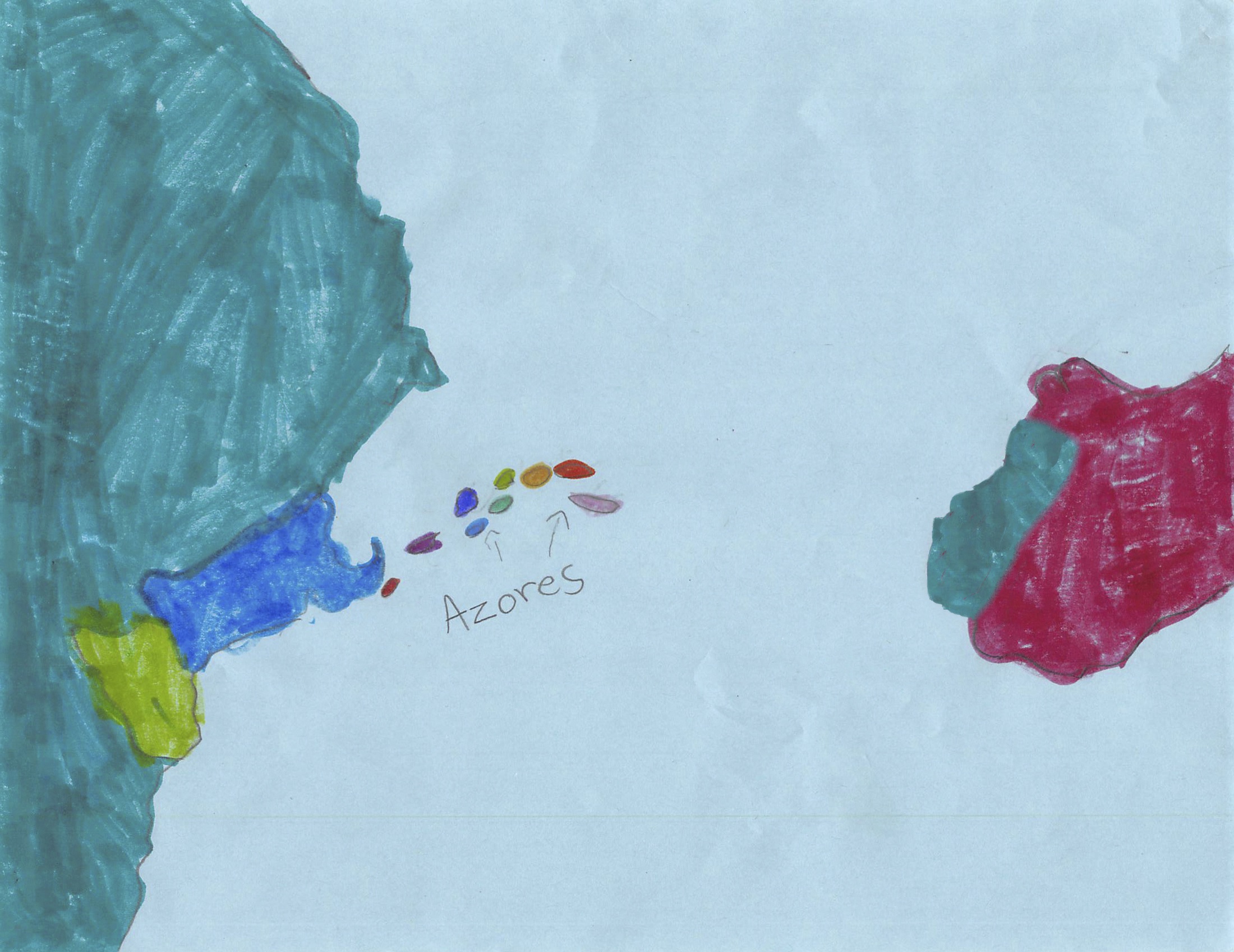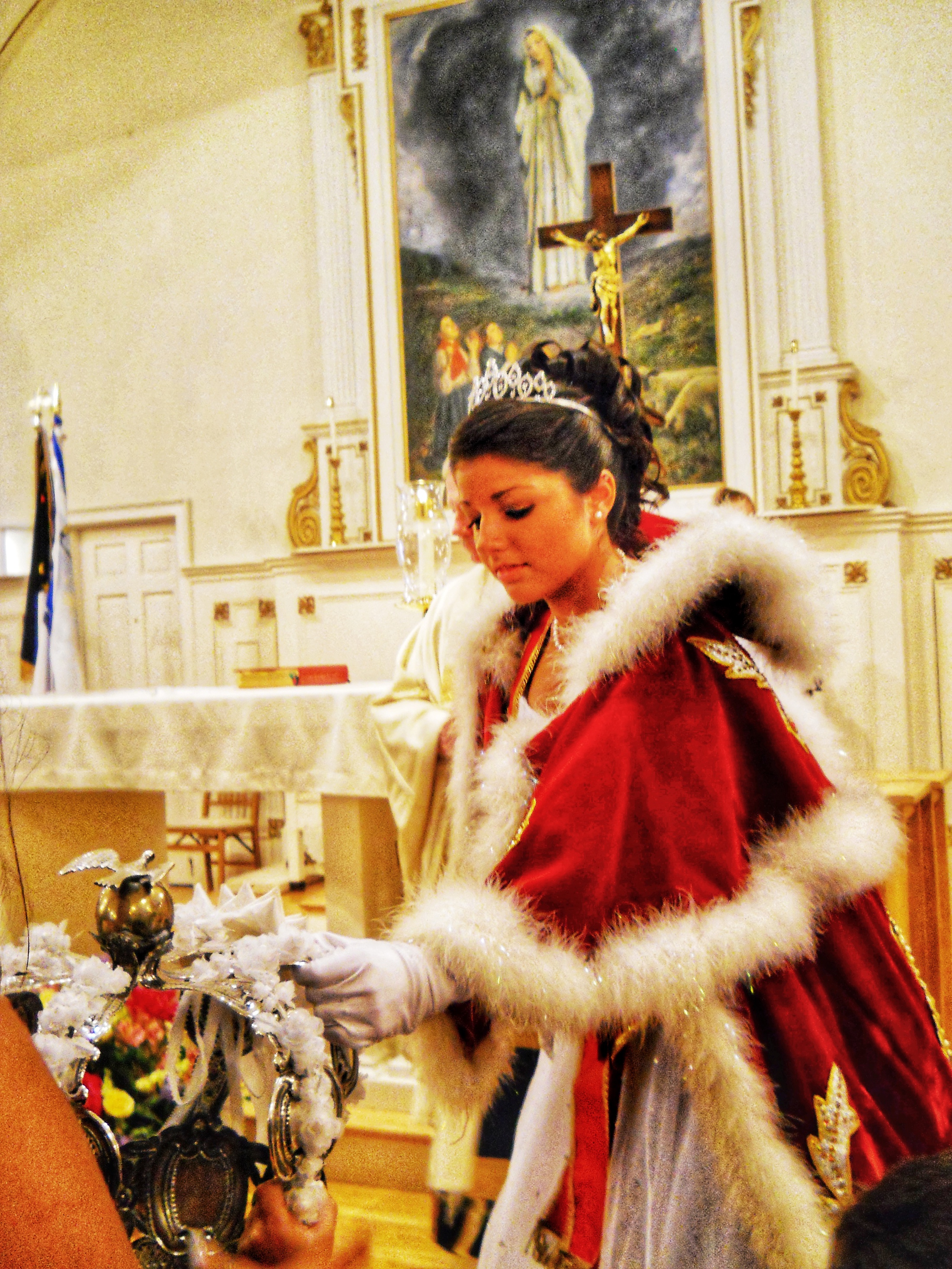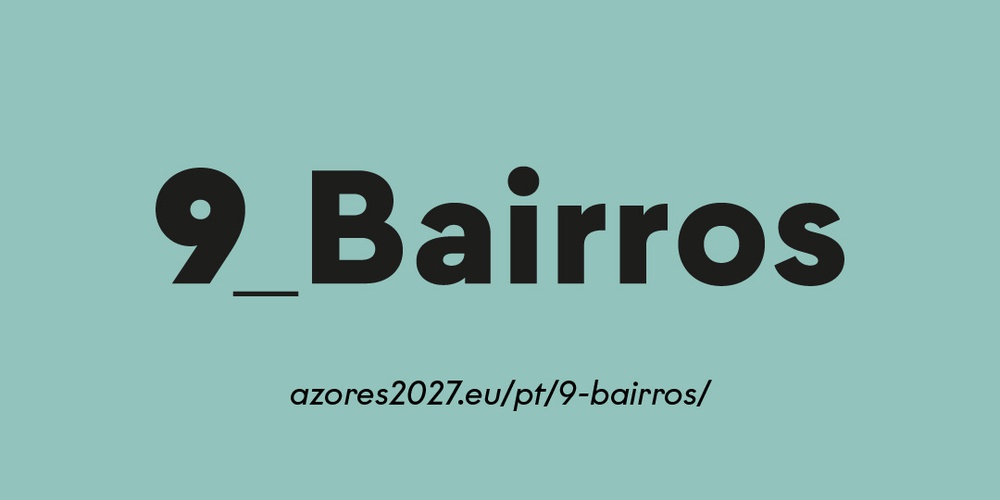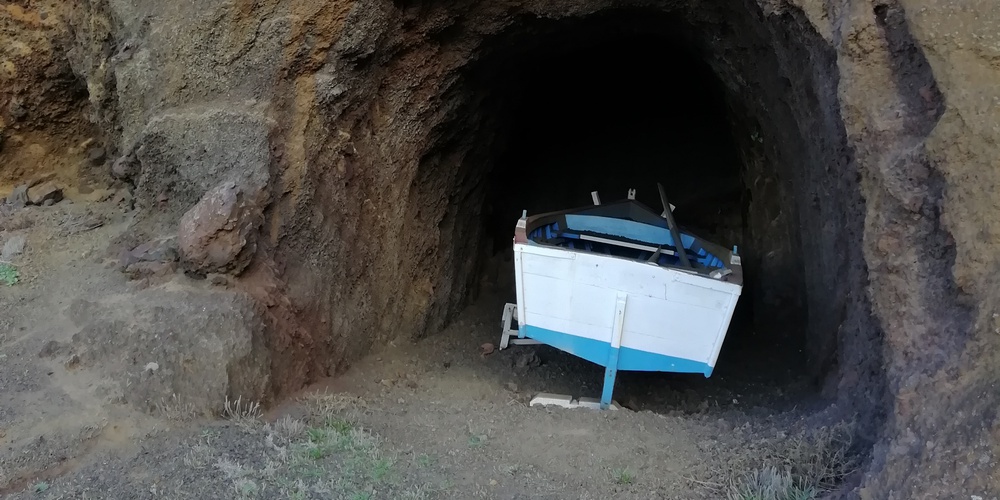
Drawing Lines around my Bairro. The Azores Unbound.
Where is my bairro? Well, I have spent time throughout my life living in a good number of places and consider a few of them to be home. This includes Providence and Lisbon, between which I have lived most of my life, and would also include my family’s Azores, where I lived for some years. If I contemplate my Azorean bairro though, I don’t think of it as fixed geographic place, but rather as an idea.
I would admit part of my bairro is where I was born and largely raised, the place to which I always return—Falmouth, Cape Cod MA. If you were from Falmouth, I would then tell you that I was from Hatchville and the street, and you would know exactly off what part of Sandwich Road I lived. This doesn’t tell the whole story, though because like most everyone I know in my hometown, my people all came from the Azores. In Falmouth, the Azores were as much a part of my town as the ground on which I walked, even though I had not yet been there.
I grew up in the Azorean and Cape Verdean part of town in a house almost exactly equidistant from three of the main immigrant clubs, the St. Anthony’s Club (which is now defunct), the Cape Verdean Club, and the Portuguese American Association. Although I am now a member of these last two organizations, when I was younger, I spent much more time at events for the East Falmouth IDES, an immigrant Holy Ghost Brotherhood from Terceira, (to which I also currently belong) and before that at the default “club” for most Azoreans and others who came to Falmouth from Portuguese-speaking geographies, St. Anthony’s Church (an organization that I left a long, long time ago.)
The first immigrant organizations in my town—even before there was a church—were all Azorean Holy Ghost fraternal societies. That they still thrive is one of the things pointing to the century long love affair that Falmouth has had with the Azores and helps craft the Weltanschauung of the immigrants, their children, and even non-Portuguese in my town. It is a love affair that may not be symmetrical, but it is one that burns brightly from the side of those of us in Falmouth.
When I was a kid, the feast put on by the Terceirences (founded in 1984) was called by some the “Greenhorn Feast.” For anyone who doesn’t know, “greenhorn” is an unkind term used to classify immigrants—most from the Azores—coming to the US in the post 1960 wave. At points during this period there more people born in the Azores living in North America than could be found in the entire archipelago. When I was born, there were certainly more people from the Azores living in Falmouth than lived in most Azorean villages. Calling it the “Greenhorn Feast” set apart the new organization from the older Upper Cape Espírito Santo Irmandades, which had been founded by immigrants from the Azores at the close of the 19th century but were then run largely by their American-born descendants.
The point of founding a collective voluntary social association is to draw lines around the members and their activities, while also using that line to point out those who belong on the other side of it. Among those who used the name, calling it the “Greenhorn Feast” set apart the organizations, their membership, and the weekends on which their feasts have been held. If we are being honest about the conflicts between migrants and the social mobility efforts of older generations in an America hostile to working class immigrants, the name was also an attempt by those born in the US to racially distance themselves from the more recent arrivals. These were Azoreans with whom they did not want to be associated, at least not in the estimation of the non-Portuguese.
Today, no one calls it the “Greenhorn Feast,” and in an interesting twist that encapsulates some of what I am trying to talk about in this essay, is now known by everyone in town—who knows about it, anyway—as the “Azorean Feast.” Part of the change is because membership in the two main Espírito Santo organizations are now largely mixed, with immigrants and older generations belonging to and helping to run each of them together, while these members also work with one another in other clubs in town. Calling it the “Azorean Feast” however, recognizes that it is still a feast founded by the immigrants who primarily run it, but rather than distancing themselves from the “greenhorns,” these older generations seek to embrace them, finding with them common purpose and opening the ways they hope to shape and define their bairro. Through these shifting definitions over historical periods and political moments, they seek to draw themselves all together on the same side of the line.
But where is that line? and what exactly is it being drawn around?

In one of his studies from the early aughts, anthropologist João Leal asked the children of immigrants from the Azores in Massachusetts and Rhode Island to draw a map of the archipelago in the Atlantic. Now in reality, the closest landfall to the Azores sailing from the south coast of New England is Cape Cod, which is about 3300 km in a straight line across open ocean to the closest port of call at Santa Cruz das Flores. Conversely, the distance between the Azores and continental Portugal at its closest point (from Santa Maria to Cabo da Roca) is only 1400 km. The kids drawing up the maps though didn’t see it that way. In their rendering, the relative distance of the islands between the continents was reversed, and they oriented the Azores on their maps much closer to New England, in some cases right off the coast. For them, the Azores were not situated in the reality of their physical geography but rather were placed where they were experienced in their imagination. In other words, the kids drew the Azores as part of their own bairro.
Others in New England communities founded by Azoreans draw similar lines, something I realized while working on an anthropology project with the Espírito SantoIrmandades in New England. Part of a team attending all of the 70-odd Espírito Santo feasts in the region, one part of the comprehensive study included collecting some basic data about the reliquary possessed by each of the Irmandades. This included information about the many silver crowns used by each society, a central ritual element in the socio-religious pageant. Fred Sousa, a key officer and descendent of founders of the Azorean Sociedade Portuguesa do Divino Espirito Santo Inc., in Stonington, Connecticut (one of New England’s older and largest feasts) spoke with me about the Irmandade’s crowns. The society’s oldest crown dated to 1914, he said, and another was from the 1920s, both brought from the Azores by the original migrant settlers in Stonington. A third crown, Sousa proudly told me, was also from the Azores, but had been commissioned in the 1960s by one of the members of the society who wanted to donate a larger replica of the smallish first crown to commemorate the town’s original Azorean settlers (part of polemics pitting the Azoreans and their feast against more recent arrivals from continental Portugal and a rival Estado Novo supported celebration of Our Lady of Fatima). In his nostalgic (and political) exuberance to make a bigger version of the original, the construction of the replica failed to account for the structural necessities required to support the weight of a larger crown. Designed with only four prop struts, the same number as the smaller original, the unstable architecture made the heftier crown wobbly and prone to collapse, rendering it of little practical use in the ceremonies. As a result, it had been mostly retired. (A fine metaphor for what happens when one privileges nostalgia over functionality.)
Pressing Sousa to provide more details about the crown and its provenance, I inquired about the manufacturer, etc., and was told that he couldn’t remember the name of the shop or the mestre who made it, but he was pretty sure that the silver smith was “a place right on Columbia Street.”
I diligently took this down in my notes, and was about to move on to the next question in the lengthy survey, but re-reading the sentence I had written, thought, wait a minute, Columbia Street?
Attempting to clear up my confusion, I asked him, “Did you say Columbia Street? You mean Columbia Street in Fall River?” (the well-known thoroughfare that runs through the commercial, residential and cultural heart of Fall River, Massachusetts’ sizeable Azorean population.)
“Fred, I thought you said this crown came from the Azores?”
Sousa replied to my query, saying: “well, the Azores, Fall River, Portugal, the old country, it’s all the same.”
Here was another Azorean bairro emancipated from delimited geography. The contours drawn from an imaginário of one’s own memories and retold in repurposed recollection. A bairro fashioned in the transported and transformed cultural practices of immigrants and ancestors. Now these practices may or may not still exist in the Azores, but when they do exist there, frequently exist in decidedly different contexts. This is an Azorean bairro as a disembodied ethos, one extended across topographies by those who left and that is religiously guarded by many who, like Fred Sousa, have never even set foot in the islands.
When thought about with some imagination this bairro is not a fixed place because the people living in it are themselves not sedentary, even those who never leave home. We all live in overlapping series of confederacies and communities and have links to places and others that our neighbors do not, and so we can draw the silhouette of such bairros in expansive interconnected strokes. Connections to (and experiences and sensibilities of) other whereabouts are brought back home as easily as those that exist locally are exportable. Every time that happens, then those lines around one’s bairro are redrawn. Picking up on the metaphors we live by in the work of linguists George Lakoff and Mark Johnson, James Fernandez writes about how we make sense of what exists in the unseen dark at the bottom of the stairs. We creatively adapt known metaphors and recast older experiences to “predicate upon the inchoate” and cognitively assemble discrete and new categories with which to contemplate meaning. In practical terms, these metaphors and the connections they engender allow us to grow the borders drawn around our bairro.
To expand on this point, I once travelled from Portugal with a band I play in, the Lisbon and Sintra based brass band Farra Fanfarra to perform a series of festival, club, and university shows in a two-week tour of Massachusetts and Rhode Island. Helping to financially support the tour were many area Portuguese studies centers in New England including a performance at the LusoCentro of Bristol Community College in Fall River where the band headlined “Portuguese Language Day,” an event attended by some 500 high school students, most of them from Azorean Portuguese-speaking families. When booking the show, we were asked to provide a list of the “Portuguese music” we played. The closest we came was a version of Buraka Som Sistema’s hit song “Wegue Wegue,” a tune that strained the original definition of what the organizers had in mind when they inquired about “Portuguese music.” Now, Farra Fanfarra has played in international exhibitions and won international competitions while representing Portugal; but had never confronted what made the band “Portuguese” in the way the organizers intended, even if they ended up inviting us anyway.
Unlike the situation in many immigrant communities, Farra Fanfarra would not have artistic liberty if it was restricted to rigid definitions of what made it Portuguese or not. The band’s performance certainly broadened the concept in New England. Drawing the contours of a bairro around orthodox expressions of cultural identity is ultimately counterproductive and deeply limiting. This kind of thinking is often perpetuated by those who ruminate about Azorean migrant communities using culture as a static object rather than a creative, evolving target, who arrive at hackneyed minor epiphanies bemoaning the effect of “generational change” and “lost culture.” So much talk about “traditional” practices that need to be “preserved” in places like New England, California or Canada—because how can an Azorean immigrant bairro exist if it doesn’t look the same as it did 100 or 50 or 30 years ago? Never mind that the Azores have themselves transformed over the last 30, 50, 100 (or 5) years. It is all so much nonsense.

A bairro is not drawn in lines of orthodoxy to a particular set of cultural practices or how one’s ancestors construed their identities. Immigrants may have the past as a point of reference, and construct their conception of their bairro accordingly, but the past also includes their experiences wherever they landed and the worlds they have created since arriving. The only place one’s bairro doesn’t change is in the imagination of those who left and no longer return; or who, having returned, are limited by expectation or afraid of or shocked by growth.
This is a bairro defined by diffuse and expansive connections of lived contacts and shared memories, of experiences and knowledge, re-articulated in an ever changing present. This bairro is situated across both actual islands in the ocean as well as the metaphoric islands scattered in pockets among continents. The Azorean archipelago is a metaphor that provides connection to the here, but by necessity creates links across a chain of many other elsewheres—geographic, temporal, and spiritual. Like São Miguel’s Romeiros, who, with every step from village to village, with every house they sleep in, and with every street they pause upon to rest, expand the notion of what constitutes their bairro. They keep walking and keep chanting and in this movement is an act that broadens and strengthens the bonds of community among those with whom they come into contact.
In the Azores, survival continues to depend on stringing together these elsewhere connections, making commonplace the idea of one’s bairro as an extended, translocal, and inter-connected space. In the smallness of the Azores’ hyper-locality, the denizens have been required to push beyond the confines of a 360-degree ocean horizon, beyond the immediately visible physical border that encircles the local, and beyond the intellectual border of insular culture and thought. Those moving among the Azores demonstrate continuously that their bairro is not limited by this horizon, their umvelt is constantly scaling up and out—either by connections made as a result of leaving, or from having returned, or from the connections made to those who are passing through. This all shatters the notion of a bairro as a delimited locale.
This is my Azorean bairro, anyway. It is movement and change in history, it is back and forth across maps, memory, and measure. Seen from migrant communities, one’s bairro may well be contemplated by staring at old plots, but one can only truly sense the contours of a bairro when living in it in the collective present. For this reason, no matter where I may be in the world, when I draw my Azorean bairro, I am always at home.

Anthropologist Miguel Moniz is a Senior Researcher at the Center for Research in Anthropology (CRIA) ISCTE - Lisbon University Institute and the Director of the Migrant Communities Project. Moniz work has been funded by the US Fulbright Foundation, the ERC, FCT, Massachusetts Cultural Council, Luso-American Foundation (FLAD) and Erasmus +. From Cape Cod, MA, he has lived in Portugal for the past 25 years, but is in his native New England frequently and visits the Azores whenever possible.


